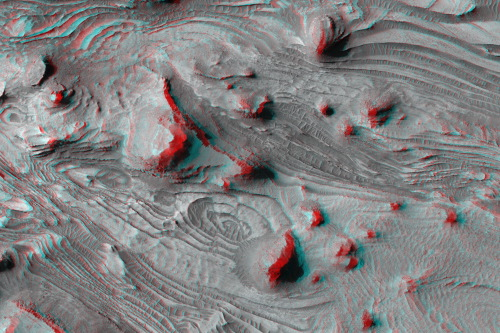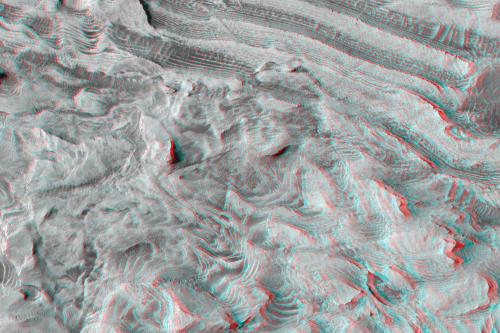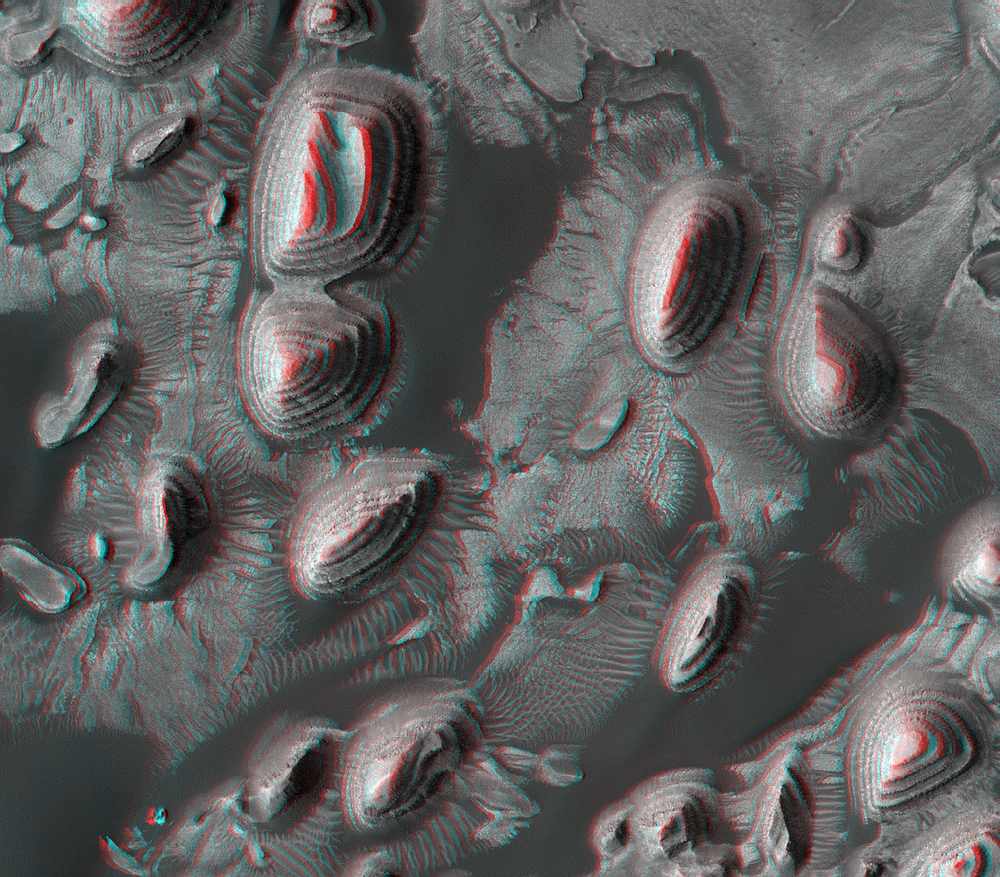[/caption]
Grab your 3-D glasses and prepare to be amazed (and addicted!) The team from the remarkable HiRISE Camera on board the Mars Reconnaissance Orbiter has released a collection of 3-D images — 362 of ’em — of Mars surface. The incredible power of this camera can resolve features as small as one meter, or 40 inches, across, and in looking at these 3-D images, it’s almost like being there. Above is one of my favorites from this collection, Arabia Terra. “It’s really remarkable to see Martian rocks and features on the scale of a person in 3-D,” said Alfred McEwen of UA’s Lunar and Planetary Laboratory, HiRISE principal investigator. “The level of detail is just much, much greater than anything previously seen from orbit.”
How was the team able to create so many 3-D images? And how can you get or make a pair of 3-D glasses?
Usually, creating 3-D anaglyphs is a tedious and time-consuming process. But the HiRISE team was able to automate some of the software used in processing the images so two images of a stereo pair could be fed into the software “pipeline” and correlated automatically. So look for even more 3-D images in the future. But 362 should keep most of us busy, for awhile anyway!

Here, spectacular layers are exposed on the floor of a large canyon in the Valles Marineris system called Candor Chasma which is about 2-and-a-half miles, or 4 kilometers deep. The canyon may once have been filled to its rim by sedimentary layers of sand and dust-sized particles, but these have since eroded, leaving patterns of elongated hills and layered terrain that has been turned and folded in many angles and directions.
If you don’t have a pair of 3-D glasses, here’s a link to a list of several sources of finding some, or you can even make your own. Sometimes, 3-D glasses can be found for free on cereal boxes, or in children’s books or other sources.
Find out how 3-D images are made, and learn how to make your own 3-D images here.

Here is a 3-D version of Becquerel Crater, and the layered terrain of which we wrote about last week, which was formed by cyclical climate change.
See the entire collection of HiRISE 3-D’s here.
Source: U of Arizona


That’s it. There are just enough awesome stereo HIRISE shots here that I’m going to have to craft myself a pair of 3D goggles. Of course this will have to done during work hours, so my employer will not be happy. I’m blaming you UT. I’m blaming you!!!
hmm i didnt see anything special with my 3D goggles…maybe its a sign i should check my ayes, or buy a new google.
but beautiful pictures though!
They really should make them available for free viewing/crossed eye viewing, so that one could watch them without 3D goggles, i never have a pair when i need it.
As I’ve told the nice HiRISE folks on twitter already, if you don’t have two eyes working more or less at the same level, all these anaglyphs are not for you. That’s my case: I only have peripheral vision in my right eye, so whenever I see an anaglyph I just fast forward. To me, they’ll never be more than ugly pictures.
I want more digital elevation models, though! 😉
These look great to me with my 3-D glasses!
As a total novice — I got my 3-D glasses off a cereal box and they work great. I love these pictures. What an amazing (universe?) we live in…………